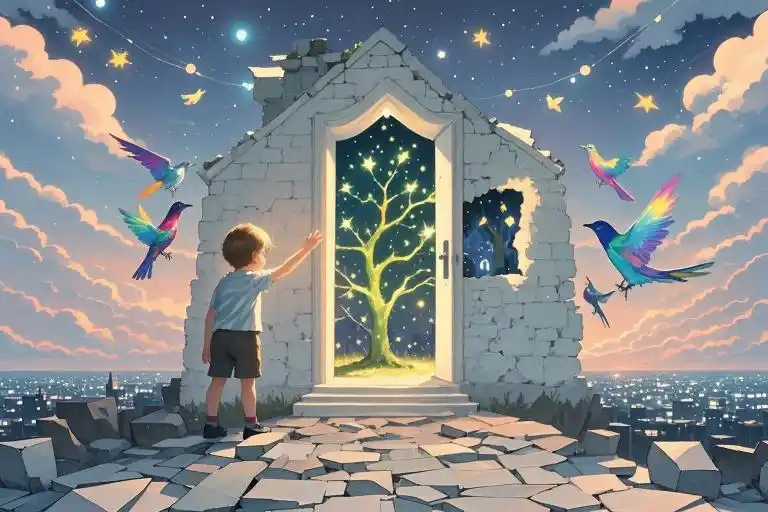You know that feeling when you walk into a friend’s house and smell fresh cookies? Their mom laughs while stirring soup, sunlight pools on a cluttered kitchen counter, and someone’s always yelling “Grab extra napkins!” through a smile. You freeze.
Why does this mundane scene feel like watching a movie in a foreign language?
For 20% of us (yes, WHO says 1 in 5 adults), “home” smells different. It’s the metallic tang of doorknobs gripped too tight, the burnt-coffee bitterness of “I’ll love you when…” promises, and the sour-milk ache of laughter that dies mid-air. We’re the kids who turned math textbooks into secret diaries, the teens who hid in mall food courts till closing, the adults who still flinch when phones buzz after 9 PM.
Let’s unpack that suitcase together.
When Safety Scares: The Biology of Broken Homes
Here’s a brain teaser: Why do some people sweat through holiday dinners like they’re defusing bombs?
Neuroscience shows childhood trauma literally rewires us. That knot in your stomach when Dad clears his throat? That’s your amygdala screaming “Red alert!” because it remembers 2003 Thanksgiving when he threw the gravy boat. The way you automatically note all exits in restaurants? Say hello to your hypervigilant prefrontal cortex, trained through years of predicting parental meltdowns.
But here’s the plot twist:
🔹 Survival Skill: Scanning rooms quickly
🔹 Adult Superpower: Noticing client moods during presentations
Our childhood defenses become workplace strengths – we just need to untangle them from the hurt.
The Escape Artist’s Toolkit (You’ve Been Training for This)
Remember building pillow forts as a kid? That wasn’t just play. You were engineering emotional safe zones. Let’s decode those genius strategies:
1. The Library Hideout
Then: Reading Harry Potter for the 11th time while parents argued downstairs
Now: Using narrative therapy to rewrite your story
Try: “If my childhood was a book chapter, what title would future me give it?”
2. The Park Bench Therapy
Then: Staying late at swings to avoid going home
Now: Recognizing nature’s healing power
Pro Tip: Try “earthing” – walk barefoot on grass while visualizing roots growing from your feet
3. The Imaginary Friend Upgrade
Then: Creating invisible allies
Now: Using internal family systems therapy
Exercise: Write a letter to your 8-year-old self as their wise future friend
Rewiring the Family Blueprint: From Surviving to Thriving
I once worked with a client – let’s call her Mara – who kept dating men who hated her artwork. During our EMDR sessions, we uncovered a memory: Her mother burning her kindergarten paintings saying “Artists starve.” At 32, Mara’s hands still shook holding paintbrushes.
Here’s what changed:
1️⃣ Pattern Interrupt: She bought neon pink acrylics (her mom’s most hated color)
2️⃣ Boundary Building: Created a “No Criticism Zone” every Sunday morning
3️⃣ Celebration Ritual: Ate strawberry cupcakes (her childhood favorite) after each completed piece
Within months, her Etsy shop launched. Last I heard, she’s teaching trauma survivors to paint.
Your Turn: Let’s Build a Safety Nest
Grab your metaphorical toolbox – here’s your starter kit:
🔧 Sensory Anchor Kit
- Smell: Vanilla extract (comforting and available in any grocery store)
- Sound: Save a voicemail from your safest person
- Texture: Keep a velvet scrunchie in your pocket
📝 Boundary Builder Prompt
Finish this sentence: “My peace isn’t up for negotiation when…”
🌱 Growth Challenge
Next time you feel that familiar panic rising:
- Name 3 things you see (“blue pen, coffee stain, sunlight”)
- Whisper: “This feeling has a beginning, middle, and end”
- Do a 10-second power pose (hands on hips, chin up)
The Beautiful Aftermath
That client Mara? She texted me last week with a story that’ll make your heart glow. Her mom visited her studio – first time in a decade – and stared at the riot of neon paintings. Then something cracked. Not a teacup this time, but the old script.
“These,” her mom said, tracing a pink swirl, “they’re… alive.”
Mara handed her a brush.
The road isn’t about forgetting the shadows. It’s about growing gardens where the cracks let light in. Your childhood survival skills? They’re seeds waiting to bloom into resilience. Let’s water them together.

